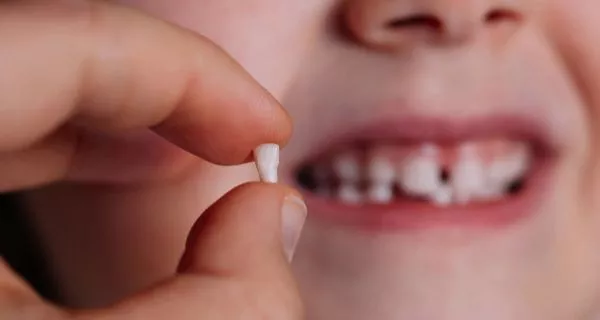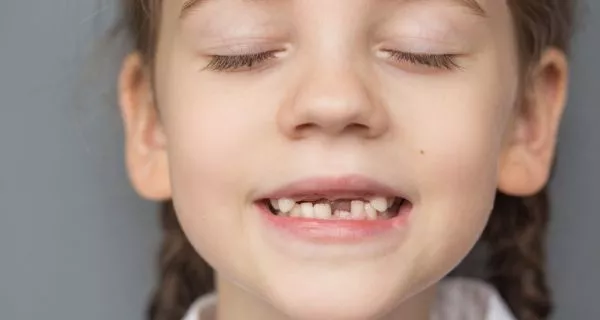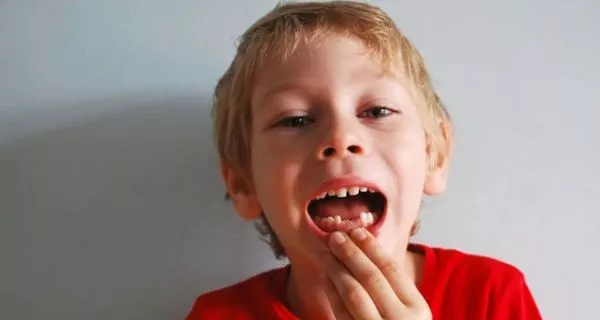Last Updated on: 16th December 2025, 07:12 am
Baby teeth are temporary and fall out naturally to make space for permanent teeth. This process usually starts around age 5 or 6 and ends around age 12 or 13. Dentists in Ventura County recommend regular check-ups to monitor development, prevent problems, and guide families through healthy oral care.
Everyone has two sets of teeth: temporary (baby) teeth and permanent teeth. Baby teeth appear in early childhood and eventually fall out to make space for permanent teeth, which will last for life.
Understanding this process helps parents care for their children’s teeth, preventing problems and ensuring healthy growth. In Ventura County, families often have questions about when and how teeth should fall out.
Dentists at Channel Islands Family Dental Office, serving Ventura, Oxnard, Newbury Park, Port Hueneme, and Santa Paula, are ready to guide families through this important stage of dental development.
Table of Contents
ToggleWhat are milk teeth and how are they formed?
Milk teeth also known as temporary or baby teeth are the first set of teeth that a person has.
- They start forming in the womb, around 6–8 weeks of pregnancy. But, babies are born without visible teeth; the teeth are still developing inside the jaw.
- Around 6 months old, the first teeth appear: lower front teeth first, then upper front teeth, and finally molars.
- About 4 new teeth emerge every 6 months until all 20 baby teeth are complete (10 upper, 10 lower).
Around the age of 3, a child will have a complete set of milk teeth.
Why and how do milk teeth fall out?
Baby teeth are the right size for a young child’s jaw. As children grow, their skull and jaws also grow, and larger teeth are needed. This is why baby teeth naturally fall out to make room for permanent teeth.
Each tooth has a root (inside the jaw) and a crown (the visible part).
- Permanent teeth grow beneath the baby teeth and slowly dissolve their roots.
- This process makes the baby teeth loose, and eventually, they fall out naturally.
- Permanent teeth then take their place, forming a full set of 32 adult teeth.
When do the primary teeth fall down?
The first baby teeth usually fall out around 5–6 years old. They follow a general order:
- Lower central incisors
- Upper central incisors
- Lateral incisors
- Canines and molars
Girls often start losing teeth slightly earlier than boys. Most children have all baby teeth replaced by 12–13 years old.
Parents in Ventura County, including Oxnard, Newbury Park, Port Hueneme, and Santa Paula, sometimes worry about timing, but every child develops at their own pace. Dentists at Channel Islands Family Dental Office are ready to answer questions and guide families through this natural process of growth.
Do permanent teeth come in without others falling out?
Yes. Permanent teeth, especially molars, can grow behind baby teeth without causing them to fall out.
- First molars usually erupt at 6 years old.
- Second molars appear around 12–13 years old.
- Third molars (wisdom teeth) emerge between 17–21 years old.
Sometimes, a permanent tooth may not fully dissolve a baby tooth root, which can cause it to come in at an unusual position. In this case, a dentist in Ventura County can evaluate and recommend treatment if necessary.
What happens if milk teeth do not fall out on their own?
Sometimes baby teeth do not fall out on their own, and this can lead to dental issues if not checked by a professional. There are several reasons why a baby tooth might stay in place longer than expected:
Sometimes a baby tooth does not fall out on its own. This can happen if:
- The permanent tooth under it is missing or growing in the wrong place.
- The root of the baby tooth does not dissolve properly.
- Rarely, the baby tooth fuses to the jawbone (ankylosis).
When this happens, the permanent tooth may have trouble coming in correctly.
If a baby tooth is not falling out or permanent teeth seem locked it’s important to see a dentist in Ventura County. Dentists may monitor the tooth, extract the baby tooth, or provide orthodontic guidance to help permanent teeth grow in the right place.
Early dental care prevents future problems with alignment, bite, and oral health.
What should be done when a tooth begins to move?
When a baby tooth starts to feel loose, it means the permanent tooth underneath is pushing it out. This is a normal part of growing up and the tooth can take a few days or weeks to fall out on its own.
Dentists in Ventura County recommended:
Don’t force it too early
Avoid pulling or forcing the tooth before it is very loose. Trying to pull it too soon can cause pain, bleeding, or damage to the gums and the permanent tooth underneath.
Let it loosen naturally
- Encourage your child to wiggle the tooth gently with their tongue or clean fingers.
- Crunchy foods like apples or carrots can help loosen the tooth without hurting.
- Always remind your child to wash their hands before touching a loose tooth.
Keep the area clean
Continue brushing gently around a loose tooth with a soft toothbrush to reduce bacteria and prevent gum irritation.
Manage discomfort
In the gums feels sore, you can:
- Offer cool, soft foods like yogurt or applesauce.
- Use a cold cloth or cold pack on the cheek to reduce soreness.
- A warm saltwater rinse can help keep the area clean and soothe gums
What to do after the tooth falls out?
When a baby tooth finally comes out, Dentists in Ventura County give son tips:
- Have your child rinse their mouth with water or a saltwater solution to clean the area.
- Press a clean, damp cloth or gauze lightly against the empty socket until bleeding stops. If bleeding continues longer than about 1 hour, contact your dentist.
- It’s normal for the socket to feel sensitive for a short time, a cold washcloth or pack on the cheek can help with any discomfort.
Once a baby tooth falls out, the permanent tooth will begin to grow in that space. This can take a few weeks to several months. Regular dental check-ups help ensure the new tooth comes in correctly.
When to see a dentist
Take your child to a dentist in Ventura County (Ventura, Oxnard, Newbury Park, Port Hueneme, Santa Paula) if:
- The tooth loosens too early or in the wrong order (like a back tooth before front teeth).
- The area around the loose tooth is red, swollen, or painful.
- The tooth has been loose for a very long time and shows no sign of falling out.
Dentists can check if the permanent tooth is coming in normally and if any treatment is needed.
What is the difference between baby teeth and permanent teeth?
Baby teeth and permanent teeth differ in several important ways:
- Size and number: Baby teeth are smaller and fewer (20 teeth) compared to permanent teeth (32 teeth).
- Enamel and dentin: Baby teeth have thinner enamel and dentin, leaving more space for the nerve. This makes them look whiter, but also more vulnerable to decay.
- Sensitivity: Although the pulp (nerve) in baby teeth is larger, these teeth are often less sensitive at first. Pain usually occurs only when cavities are advanced.
Understanding these differences helps parents take better care of their children’s teeth and prevent problems with permanent teeth.
What care should be taken?
Both baby and permanent teeth are important for:
- Chewing and proper nutrition
- Speech development
- Aesthetics and self-confidence
- Healthy jaw growth and alignment
To protect your child’s teeth:
- Brush regularly: at least 3 times a day with age-appropriate toothpaste.
- Maintain a healthy diet: low in sugar and processed foods.
- Regular dental visits: start from the eruption of the first tooth and continue every 6 months.
Remember that although there are approximate ages for the eruption and fall of the teeth, each child is different; these processes can occur at different times for each one.
How can you ensure your child’s teeth grow healthy?
Every child develops differently, so teeth may erupt and fall out at different times. The good news is that with proper care and guidance from experienced dentists, children can have healthy teeth and a beautiful smile.
Families in Ventura County can trust Channel Islands Family Dental Office, serving Ventura, Oxnard, Newbury Park, Port Hueneme, and Santa Paula, for professional pediatric dental care.
Our dentists provide check-ups, guidance, and gentle care to ensure that both baby and permanent teeth develop correctly. Visit us today to keep your child’s smile healthy and strong!
Frequently Asked Questions (FAQ)
Voice Search Snippets (Q&A)
References
1. Cleveland Clinic. (2023, May 24). Teething / Teething syndrome. https://my.clevelandclinic.org/health/articles/11179-teething-teething-syndrome
2. JADA. (2005). Tooth Eruption. The journal of the American Dental Association 136(11), 1619. https://doi.org/10.14219/jada.archive.2005.0095
3. Rathee, M., & Jain, P. (2023, July 25). Embryology, teeth. StatPearls. https://www.ncbi.nlm.nih.gov/sites/books/NBK560515/
4. Smith, G. D. (2020, March 31). When Do Baby Teeth Fall Out and Adult Teeth Come In?. https://www.healthline.com/health/childrens-health/baby-teeth-fall-out
5. WebMD. (2024, October 14). Dental Health and Your Child’s Teeth. https://www.webmd.com/oral-health/guide/dental-health-your-childs-teeth



















